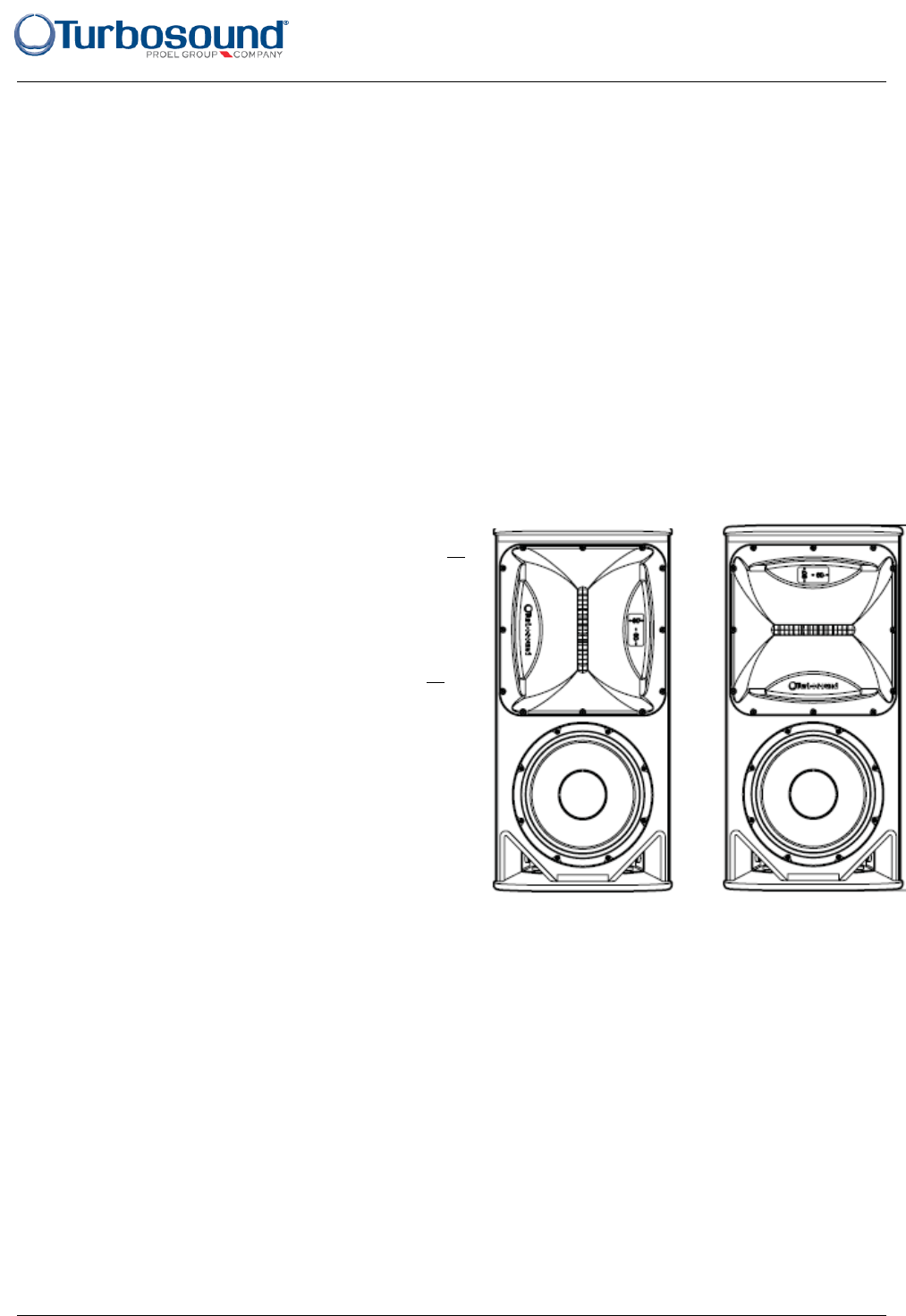
Arraying and Rigging
TCS series
TCS series Arraying and Rigging - Page 1
TCS Arraying and Rigging
This document explains how TCS loudspeakers can be arrayed and the reasons for the rotatable
horns in some models. The TCS-122 and TCS-152 both feature Turbosound’s unique Dendritic high
frequency waveguide. This can be rotated for two reasons:
1. To allow a single speaker to be mounted horizontally but still retain the wider horizontal
pattern, or
2. To allow two or more speakers of the same to be arrayed with minimal interference
The second application is explained here in detail.
One of the benefits of the Dendritic waveguide is its exceptional coverage pattern and sharp edge-of-
pattern cut-off as demonstrated in Flex Array. The sharp cut-off works either vertically or horizontally,
depending on which way the horn is rotated.
To explain this further, the TCS-122 and TCS-152
feature exceptional pattern control either left/right or
up/down depending on how the horn is rotated. This
allows them to be arrayed with adjacent speakers
without lobes or destructive interference. So the true
arrayable benefit of the Dendritic is
in the physical
plane of the Dendritic device
i.e. either left/right or
up/down depending on orientation. The other plane
of the Dendritic device functions in a similar way to a
standard horn.
The diagram here shows a TCS-122 with the horn in
two possible orientations. The one on the left is the
typical orientation, so for example the TCS-122/94
model has a dispersion pattern of 90 degrees wide
by 40 degrees in the vertical. The box on the right
shows the box with the horn rotated to give 40
degrees in the horizontal and 90 degrees in the vertical.
So the speaker on the left has a very controlled vertical pattern, whereas the one on the right (the
same speaker with the HF horn rotated) has a very controlled horizontal pattern.
The TCS-122 and TCS-152 are both available with three dispersion options: 60° x 40°, 90° x 60° and
60° x 40°. However note that only the 40 degree boxes benefit from being tightly arrayed, i.e with the
sides touching. So in a cluster of two or three tight packed boxes, you should use either the 60° x 40°
or 90° x 40° models and the horns should be orientated to give 40° dispersion in the horizontal plane.
The TCS-122 and TCS-152 are double trapezoidal boxes and it is this feature, in combination with the
rotatable horns that gives you the flexibility to build so many cluster options. The simple rule is that
the side that is touching the adjacent speaker needs to be orientated to 40 degrees.
The following options only apply to TCS-122 and TCS-152 models with Dendritic horns. The TCS-1561
and TCS-61 use conventional horns.










